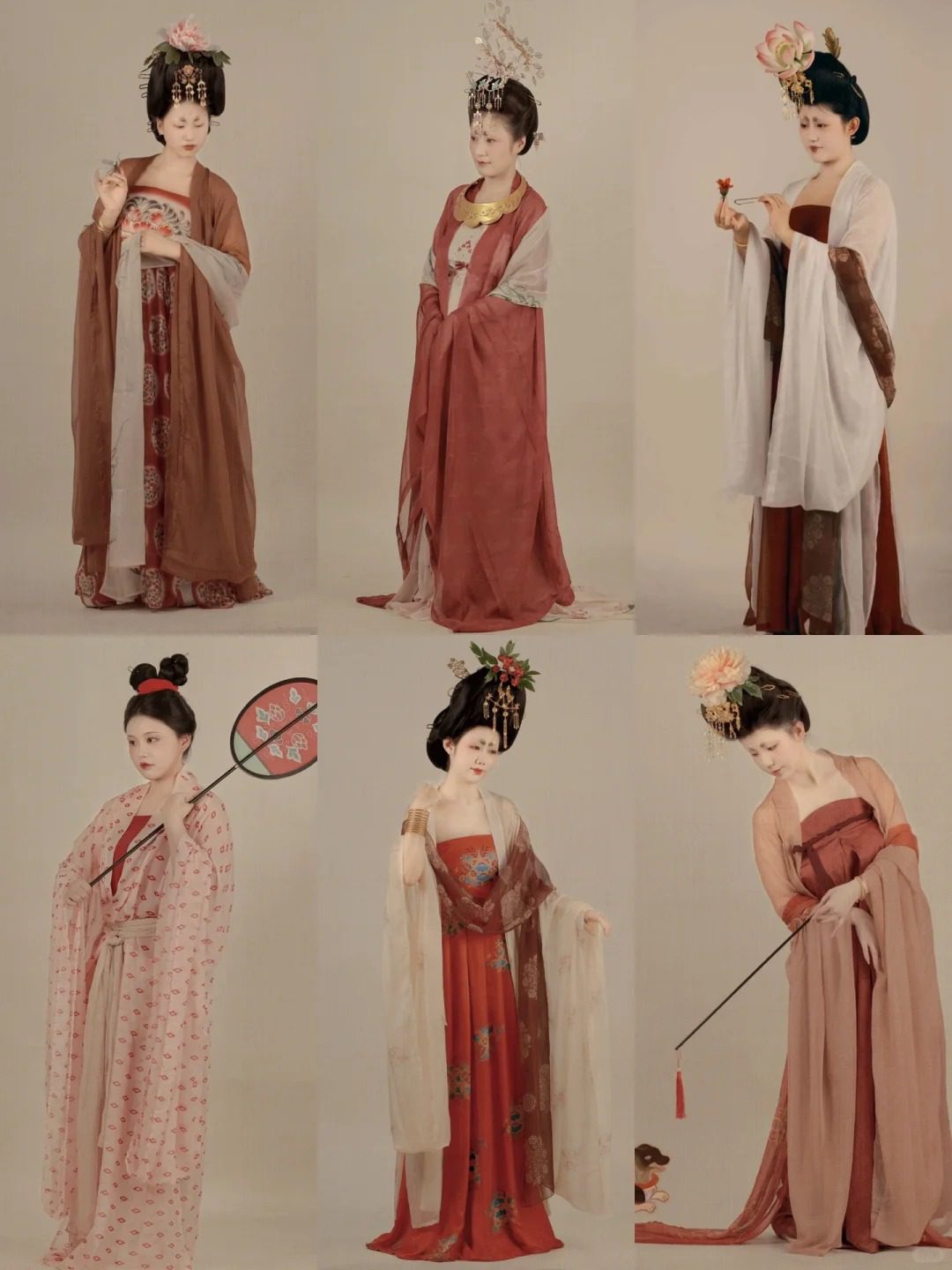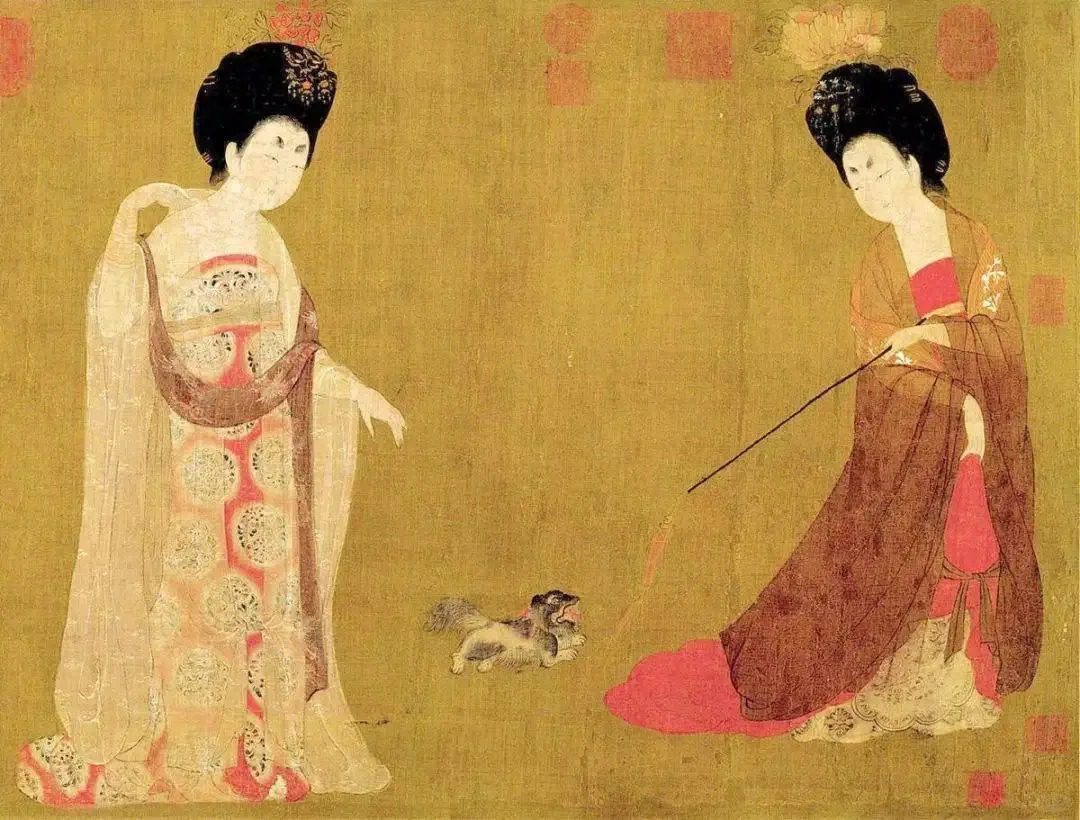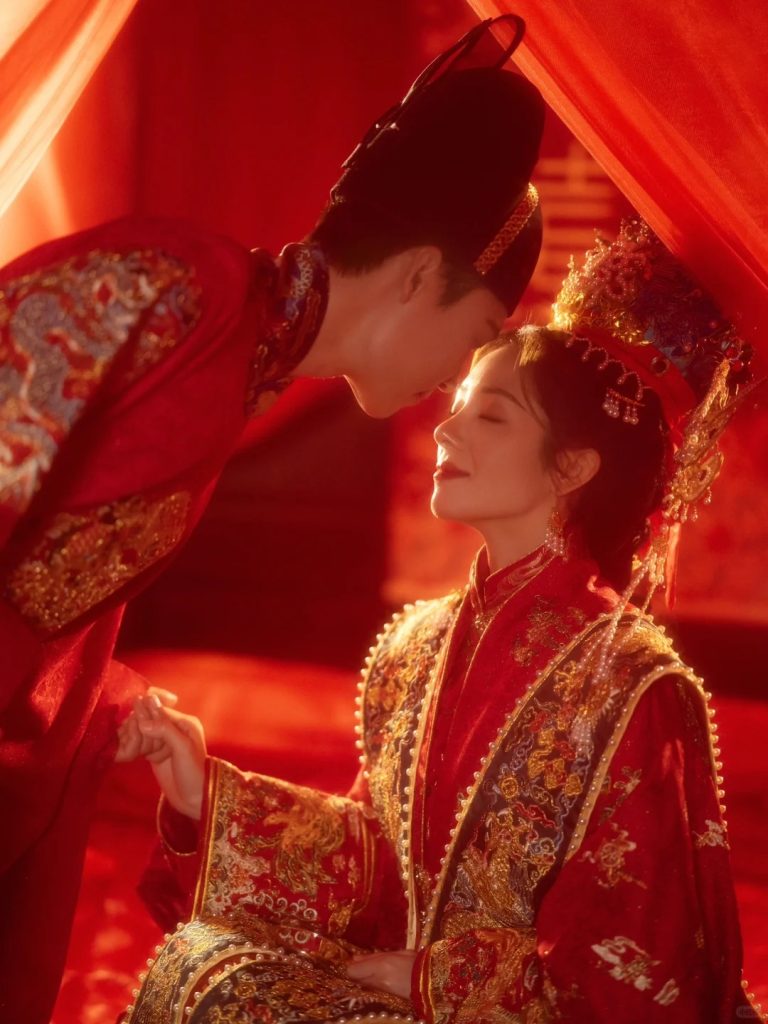Court Ladies Adorned with Flowers (簪花仕女图)Analyzing the phenomenon of “wearing underwear outside” in the Tang Dynasty

When discussing Tang Dynasty fashion, people often envision luxurious wide-sleeved robes and brightly colored skirts. However, a closer look at Tang Dynasty paintings, especially Zhou Fang’s Court Ladies Adorned with Flowers, reveals a bold fashion phenomenon—the “underwear as outerwear” trend. In modern fashion, this concept is considered avant-garde, yet over a thousand years ago, it was already a popular style among noblewomen in the Tang Dynasty. Today, let’s explore this trend through Court Ladies Adorned with Flowers, analyzing how Tang women used “underwear as outerwear” to express their individuality and embrace an open-minded fashion culture.

Artwork Analysis: Clothing Features in Court Ladies Adorned with Flowers
Court Ladies Adorned with Flowers is one of the most iconic paintings of Tang Dynasty court ladies, depicting a group of noblewomen dressed in opulent attire, adorned with flower hairpins. They stroll leisurely, conversing in a relaxed manner, exuding an air of elegance and sophistication. However, what stands out most is their daring fashion choice: sheer, translucent garments that reveal the intricate undergarments (known as hezi, a type of bodice), resembling the modern “bralette as outerwear” trend.
Several distinct “underwear as outerwear” styling techniques can be observed in the painting:
Sheer gauze tops + bodices: Light, translucent outerwear drapes over the body, subtly revealing the exquisite hezi, achieving a balance of modesty and sensuality.
Low-necked ruqun (襦裙) + bodices: Some court ladies wear low-cut tops paired with ornate hezi, creating a layered contrast in color and texture.
Wide-sleeved robes + fitted innerwear: Loose and oversized outer robes allow glimpses of form-fitting innerwear, adding a “peek-a-boo” effect to the ensemble.

How Did the “Underwear as Outerwear” Trend Become Popular? The Fashion Code of Tang Women
The Tang Dynasty’s embrace of “underwear as outerwear” was not just a fashion innovation but a reflection of the era’s openness and cultural inclusivity.
Influence of Hu Culture: A Fusion of Foreign and Chinese Fashion
The Tang Dynasty was known for its cosmopolitan nature, and with the flourishing Silk Road, Central Asian styles greatly influenced Tang fashion. Hu-style clothing, favored by Central Asian women for horseback riding, emphasized practicality and fitted designs, which inspired Tang noblewomen to adopt short jackets, bodices, and tight-fitting garments, gradually evolving into the “underwear as outerwear” trend.
Aesthetic Shift Toward Voluptuous Beauty Encouraged Bolder Fashion Choices
Tang Dynasty beauty standards celebrated full-figured, curvaceous women, in contrast to the slender ideals of other historical periods. To accentuate their natural curves, noblewomen favored sheer gauze outerwear paired with tight-fitting bodices, creating a visually layered effect that highlighted their figures with elegance and confidence.
Royal and Aristocratic Influence on Fashion Trends
The clothing preferences of palace women and aristocratic ladies set the tone for broader fashion trends. Women like Yang Guifei (Consort Yang), famed for her beauty and influence, favored luxurious and lightweight garments, helping to popularize the “underwear as outerwear” aesthetic within the imperial court. This trend then spread to noblewomen and eventually became a staple of high-class fashion.
Advances in Textile Technology: The Rise of Sheer Fabrics
The Tang Dynasty saw remarkable progress in textile production, leading to the widespread use of gauze (sha, 纱), fine silk (juan, 绢), and lightweight lo fabrics (luo, 罗). These delicate materials naturally lent themselves to layered styling, allowing women to experiment with transparency and contrast. The interplay of sheer outerwear over decorative undergarments created a sensual yet refined visual appeal.
The Aesthetic Philosophy of “Underwear as Outerwear”: Sensual Yet Graceful
In Tang society, the “underwear as outerwear” trend was not about deliberate exposure but rather a confident and artistic expression of beauty. This fashion choice embodied:
A break from traditional constraints, celebrating individuality
A fusion of Eastern and Western aesthetics, forming a distinctive style
The use of layering and transparency to create an elegant and tasteful allure
Interestingly, this concept aligns with modern fashion trends such as sheer blouses layered over lace bralettes, visible lingerie styling, and slip dresses as outerwear. It is fascinating to see that the avant-garde styles of today were already embraced by the women of the Tang Dynasty over a millennium ago!

Conclusion: The Lasting Influence of Tang Women’s Fashion Freedom
By analyzing the attire in Court Ladies Adorned with Flowers, we not only appreciate the exquisite fashion sense of Tang noblewomen but also witness their pursuit of beauty and self-expression. Through the “underwear as outerwear” trend, they defied rigid conventions, embraced bold styling, and crafted a unique aesthetic that still resonates today.
Fashion is cyclical, and the Tang Dynasty’s “underwear as outerwear” trend continues to inspire contemporary styles. Whether it’s runway fashion or streetwear, many of today’s clothing choices echo the ingenuity of Tang women.
What do you think about the Tang Dynasty’s “underwear as outerwear” trend? Let’s discuss in the comments!





Responses